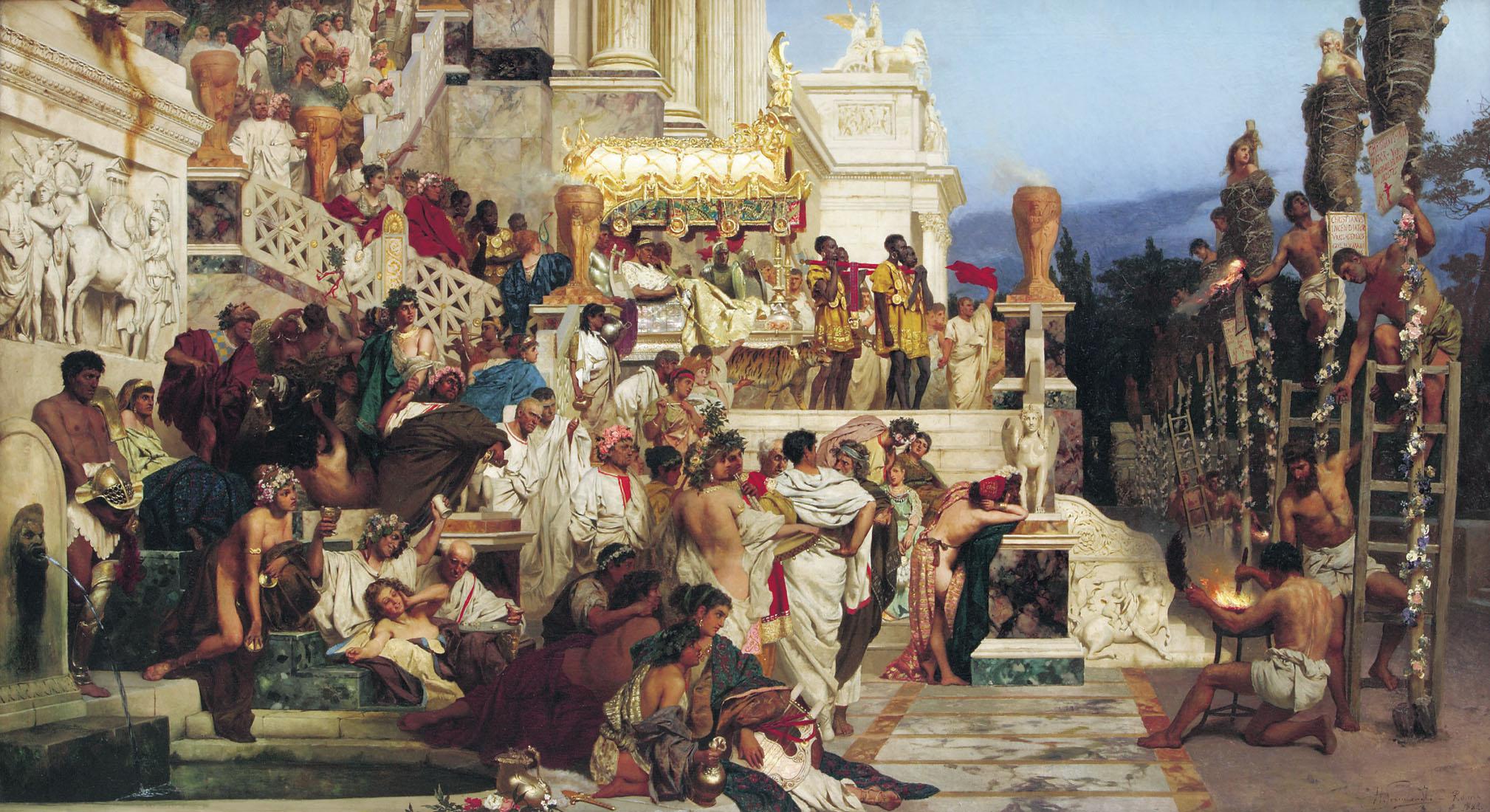The detestable, debauched life of Ibrahim the Mad — the Ottoman Empire’s worst Sultan

- Sultan Ibrahim "the Mad" of the Ottoman Empire was known for his sadistic and depraved behavior, including the murder of his entire harem.
- He was a weak and ineffective leader, draining the palace coffers with his whims and losing territory to other powers.
- Ibrahim's reign ended when he was overthrown and executed by strangulation, after his atrocities became too much for the civil, religious, and military authorities of the empire to tolerate.
Sugar was a scheming concubine. She not only shared the bed of the Sultan, but she whispered in his ear. This night, Sugar told Ibrahim that one of his harem — she knew not who — had slept with an outsider. One of his women had been defiled. Ibrahim was furious. He had his Chief Black Eunuch investigate. He had women tortured. But either they would not give up the culprit or there was none. So, Ibrahim had all 280 women in his harem gathered together. He ordered they each be tied in a sack, weighed down with stones, and thrown into the Bosporus Strait. All but one drowned.
This was merely one of the twisted acts of the Ottoman Empire’s worst Sultan, Ibrahim “the Mad,” who was in charge from 1640 to 1648.
The kafes
Primogeniture is the law of succession, where rule and title are passed down to the eldest born son. And however unfair and peculiar it seems to us today, it was much better than the alternative. In the Ottoman Empire, there was no right of the eldest. All sons had equal claim to the throne. This meant that when the serving Sultan died, there was a frantic, Machiavellian power struggle between siblings. They would gather their retinue, weave their webs, and murder one another. When one was declared Sultan, they would, invariably, have their remaining siblings strangled to death with a silk bow string (since spilling royal blood was forbidden). It’s thought that Sultan Mehmet III executed 19 of his pre-teen brothers.
Public opinion turned against such un-Quranic behavior, and Ahmed I was a kind, gentle sovereign. He decided that rather than kill his siblings, he would lock them in a secluded corner of the palace, under constant guard and with no meaningful interaction with the outside world. This kafes or “cage” was where Prince Ibrahim spent 20 years of his life.
One need not be a clinical psychologist to imagine the damage two decades of solitary confinement would do to a person. Ibrahim was not only isolated, but he also lived under constant fear for his life. All his brothers had been strangled to death. So, Ibrahim lived thinking that every knock on the door and every smiling servant could just as well be an executioner.
Unfit for rule
Ibrahim was so traumatized that when the grand vizier of the palace came to tell him he was now Sultan, he wouldn’t believe him. He thought it was a ruse to kill him. It was only when the body of his now-dead brother, Murad, was brought out below his window that he joyfully leapt to the job.
Ibrahim was an awful ruler and a sadistic, depraved person. As the journalist and historian Noel Barber put it, “Once on the throne, Ibrahim proved to be the most detestable and debauched of all the Ottoman sultans.” Even putting aside his personal perversions and viewing him with the objectivity of a historian, Ibrahim was a weak, ineffective leader. He drained the palace coffers with his whims; he started a pointless war with Venice; and he lost swathes of territory to Iran in the east, the Russians in the north, and the Habsburgs in the west.
The Ottomans laid siege to a Venetian coastal fortress on Crete for years, which was hugely expensive and distracted his armies when they were already overstretched. When the army returned home for the winter, exhausted and poor, not only did Ibrahim demand taxes from them, but he also insisted they return to the fight. The general leading the fleet refused (since sailing in the winter was a death sentence), and he was executed not long after.
Ibrahim the Mad
But it’s his personal predilections that earned Ibrahim the moniker “the mad.” He had the virgins in his harem lined up in the palace gardens so he could rape them. He would have orgies in mirror-lined rooms where his concubines were “mares” and he was a “stallion,” and he would have sex with as many as he could before he tired. He adorned his beard with diamonds and drenched the palace furnishings in an amber perfume (which is known to make people woozy). When one of his concubines told him a story about a “sable king,” he became obsessed. He demanded his men go to every corner of the empire to bring back sable. He had palace walls lined with it. He even had cats wear sable coats.
All of this was ignored by quivering sycophants worried for their lives. It’s hard to pin down which event was “too far,” but two stand out. The first was the murder of the entire 280-woman harem. The second was when he raped the daughter of a very important person. Ibrahim had spotted the beautiful daughter of his Grand Mufti (the chief Islamic legal scholar) at the baths, and he demanded to be married to her. She refused (likely because she knew of his temperament), and Ibrahim went into a rage. He had his men kidnap her. Ibrahim raped her for days, then sent her back home. From that moment on, the Grand Mufti vowed to never rest until Ibrahim was killed.
The end of terror
Everyone agreed that Ibrahim had to go. The civil, religious, and military authorities of the Ottoman Empire came together and conspired to oust the Sultan. The leaders of the jannissaries, the elite footmen of the Ottoman army, went to the Grand Mufti to seek his blessing and that of Islam on their deposition. Of course, he gave it. When the men came for Ibrahim, not one guard stood up in his defense. He was taken back to the cage. This was not enough for the Grand Mufti, who signed off on a writ to have Ibrahim executed by silk cord. And so, ten days after losing the throne, Ibrahim was strangled to death.
The story of Ibrahim the Mad stands out for its shocking depravity. In fact, some historians have argued that the stories are so lurid and so insane that we might have reason to doubt them. As with any dynasty, if you are hoping to dethrone and replace a monarch, you want to establish grievances first. You want to establish your own legitimate claim to the throne. So, it’s not unlikely that some of the accounts have been exaggerated to defame Ibrahim in history.
But even if we dilute the chronicles a bit and take more than a pinch of salt, we are still left with a weak and ineffective leader when the Ottoman Empire needed the opposite. Ibrahim was venal, vain, and violent — one of the most notorious and terrible rulers in history.





